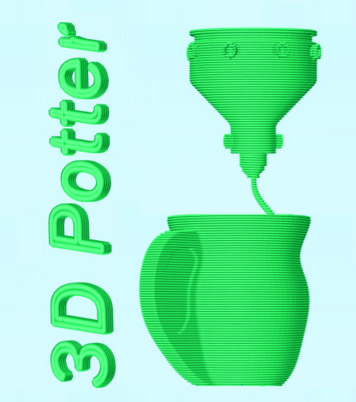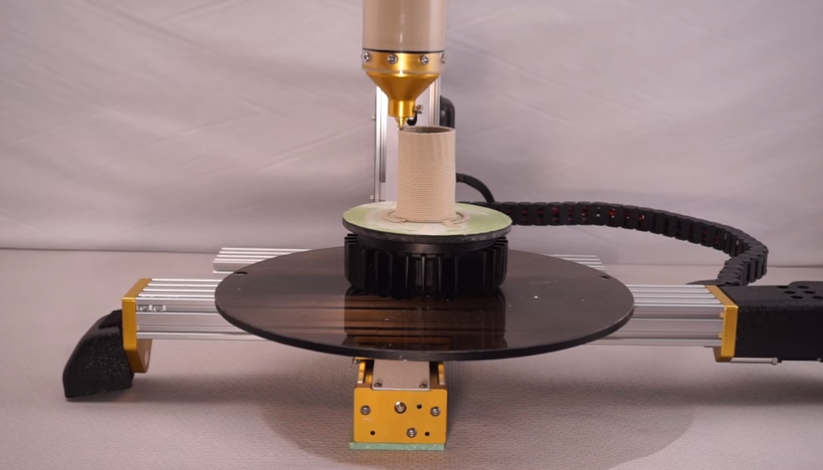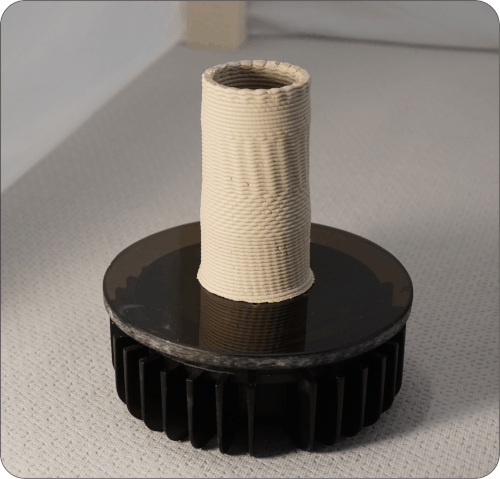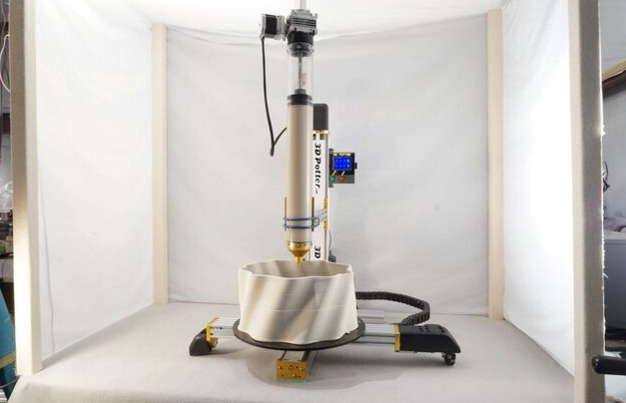 Ceramics never go out of fashion. From serious pieces made by masters to those spun in a casual nightly class meant to blow off steam—to the hippies crafting in a small studio you find like a hidden gem while exploring a city—the media of pottery and ceramics are some of the oldest, most authentic, and certainly earthliest. Creating ceramics also takes some pretty heavy-duty equipment though, from the wheel to the firing kiln, and a host of other items in between, like high-maintenance clay and all the tools that must be used by hand to manipulate it as well.
Ceramics never go out of fashion. From serious pieces made by masters to those spun in a casual nightly class meant to blow off steam—to the hippies crafting in a small studio you find like a hidden gem while exploring a city—the media of pottery and ceramics are some of the oldest, most authentic, and certainly earthliest. Creating ceramics also takes some pretty heavy-duty equipment though, from the wheel to the firing kiln, and a host of other items in between, like high-maintenance clay and all the tools that must be used by hand to manipulate it as well.
It’s pretty exciting when a major new piece of equipment comes along for the ceramics artist, offering not only the way to greater innovation, but paving a path for nearly infinite inspiration. We’ve been very interested in this trend in ceramics, highlighting one dynamic Florida 3D printing manufacturer responsible for substantially expanding the world of making in combination with ceramics and sound.
Indeed, we’ve been following DeltaBots since they not only released their Delta-Style printer last year, but then went on to offer a collection of four different versions for their users, allowing them to explore their craft via 3D printing on the basic level, more advanced, larger sized, and ‘top of the line.’
Along the way, we’ve seen the use of 3D printing in ceramics expanding amongst artists too, as we’ve explored the works of Olivier Van Herpt and Ricky Van Broekvhen. These two designers are known for their willingness to bring other forms and ideas into their work, and one great example was their ‘Solid Vibrations’ project. Spectacular in its originality, the work incorporated the rhythm of vibration of sound into their own 3D printing process—resulting in a variety of grooves and textures being integrated into their ceramics. The DeltaBots team has been thinking along the same lines for some time now, as well, and has just released their new PulseDriver, which allows for the marriage of 3D printed ceramics and harmonic movement.
While just being able to 3D print with clay is pretty exciting in itself for many artists, using this PulseDriver just looks like a world of fun. There’s not much work involved in using it as an attachment either as it quite simply mounts on any 3D printer bed below the object you are printing, and can operate as a stationary or traveling platform. Manufactured from aluminum, the bat—which the print sits on top of—is actually a CNC milled part that is constructed of aircraft-grade material.
“There are many different ways of importing impulses into the structure, including simple rhythmic sounds from either your favorite musical composition (as long as it has enough bass) or frequency generator,” states the DeltaBots team. “The 3D Potter Pulse driver is very similar to a Bone Conduction Transducer but it is not a modified speaker–this is a purpose-built driver for this application.”
“All you need in addition to our PulseDriver is an amplifier capable of delivering enough power and bass to achieve your desired rhythmic designs and a frequency generator.”
It would seem that any creative spirit would have a blast with this device, varying textures as different amplitude and print speed are explored.
“We have also experimented with music compositions as the driving force for the pulsation and this is going to be very interesting,” states the team. “It takes a little bit of work to get the right composition and the right amplitude.”
Somewhat stiff clay is required for use with the PulseDriver, as looser material would simple settle. With the PotterBot 3D printer, the user is able to employ a direct nozzle extruder so that the clay comes out with requiring any extras in between, like hoses or augers.
“This allows us to be able to extrude some of the heaviest clay possible of any machine out there,” states the team on their site.
 While as stated, the PulseDriver will work with any 3D printer, but users will find greater ease and outcomes using the PotterBot, due to the capability for printing at large heights—and indeed, in printing otherwise, they have been able to make prints up to 22” without supports. This wouldn’t be possible with thinner clay.
While as stated, the PulseDriver will work with any 3D printer, but users will find greater ease and outcomes using the PotterBot, due to the capability for printing at large heights—and indeed, in printing otherwise, they have been able to make prints up to 22” without supports. This wouldn’t be possible with thinner clay.
The PulseDriver is actually the result of years of experimentation from the DeltaBots team, allowing them to refine their process in working to amplify signals and create their desired textures. Musical compositions combined with the right amplitiude will offer a great result for many users. It should allow artists to come up a wide range of fresh new looks as they continue to explore the art—and now music—involved in ceramics. Is this something you’d like to try with ceramics? Tell us your thoughts in the PulseDriver 3D Printer Attachment forum over at 3DPB.com.
Subscribe to Our Email Newsletter
Stay up-to-date on all the latest news from the 3D printing industry and receive information and offers from third party vendors.
Print Services
Upload your 3D Models and get them printed quickly and efficiently.
You May Also Like
3D Printing News Briefs, June 11, 2025: Sustainability, Automotive Tooling, & More
We’re starting with sustainability news in today’s 3D Printing News Briefs, as EOS has strengthened its commitment on climate responsibility, and Zestep is making 3D printing filament out of eyewear...
3D Printing 50 Polymer Stand-In Parts for Tokamaks at the PPPL & Elytt Energy
Of all the world’s things, a tokamak is one of the hardest, most complex, expensive and exacting ones to make. These fusion energy devices make plasma, and use magnets to...
3D Printing News Briefs, May 17, 2025: Color-Changing Materials, Humanoid Robot, & More
We’re covering research innovations in today’s 3D Printing News Briefs! First, Penn Engineering developed 3D printed materials that change color under stress, and UC Berkeley researchers created an open source,...
Firehawk Aerospace Partners with JuggerBot 3D, Gets $1.25M from AFWERX for 3D Printed Propellants
Texas-based Firehawk Aerospace, an advanced energetic materials firm that works with aerospace and defense applications, announced a strategic partnership with JuggerBot 3D, an Ohio-based large-format 3D printer manufacturer. Together, the...



































